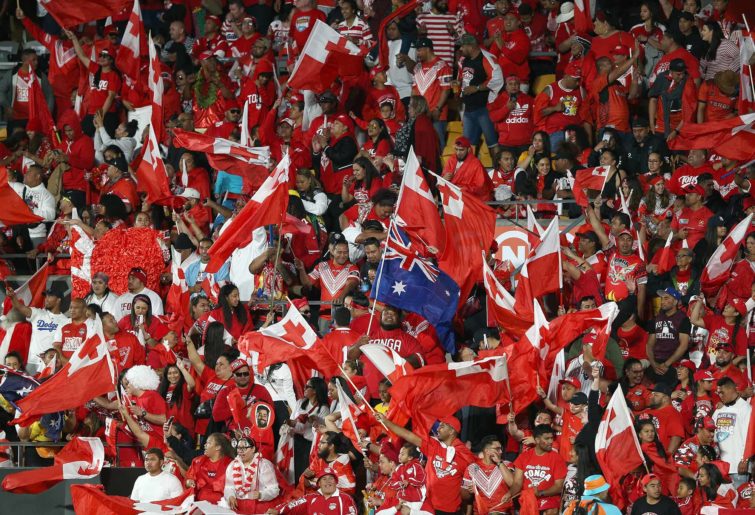Expansion of the NRL has been back in the news these past few weeks, with all sorts of options being thrown up. But instead of rushing, the NRL need to take a step back and think about what’s best for the entirety of the sport.
From Perth, to the North Sydney Bears playing in Brisbane, to a club called the Bombers and 64 different Brisbane options, or a second side in New Zealand and the relocation of a Sydney-based club, the NRL seem to be to be chock-a-block full of options.
Not that the issue hasn’t been discussed before, but it seems like things are starting to finally get moving, with expansion a relatively on-again, off-again topic for a good decade in our great game.
But let’s throw the traditional line of thinking – that it should only be one or two teams and straight into the NRL – out of the cot.
What seemingly hasn’t been mentioned, or what fans refuse to acknowledge, is that there are major untapped markets to go for if the NRL is to move in that direction, and that it doesn’t necessarily have to be straight into the NRL.
By untapped markets, this doesn’t mean just in terms of fans, or interest in the game, but in terms of pools of player talent.
This knocks over two birds with one stone, in that you get past the concerns that there isn’t enough talent in the NRL to expand and have more teams, and that you move into areas that will support the game.
Put simply, the sport of rugby league needs to evolve beyond its Sydney and Brisbane bubble, or it’s going to die a slow, ugly and bitter death.

(Photo by Albert Perez/Getty Images)
People not from Sydney, who don’t understand the tribalism of the sport, want relocation of a club this side of the border, but that’s not the way to build a fan-base and following.
It might have worked decades ago in the AFL, but it will not work in the NRL in this day and age.
But for that to work, you have to give it time, and potentially lots of it. You can’t start a new franchise in, say, Perth and just expect them to have mammoth crowds straight away. This is undoubtedly where a NRL second division could work, built from a pool of reserve-grade teams who have their own identity, and expansion clubs.
From there, the remaining state-based clubs fall into a proper reserve-grade competition, used to bring through juniors and others in each club’s top 30 rosters.
No more of the Newtown Jets being linked up with the Cronulla Sharks and Melbourne Storm with the Easts Tigers.
No, instead, clubs have their main team and their reserve-grade team, bringing back double-headers at every game of the season. St George Illawarra Dragons reserves play for the Dragons, and Brisbane Broncos reserves play for the Broncos, instead of being spread out far and wide as they currently are.
In time, doing this, as well as a national second division created with expansion teams in Perth, Adelaide, Hobart, Brisbane, Cairns, Central Queensland, regional New South Wales areas such as Coffs Harbour, a second team in New Zealand and teams dotted around the Pacific Islands, as well as teams like the Newtown Jets or Sunshine Coast Falcons, will only go to increase the awareness of the game, and therefore, logically, the talent pool.
The key advantage of being able to give so many sides a purpose is the expansion and hopefully rapid improvement of Pacific Island nations, as well as making the NRL truly national.

(AAP Image/David Rowland)
Once this is off the ground, it can be used as a vehicle to increase the interest in the back end of the NRL season, with promotion and relegation coming into it. Instead of fighting not to get the wooden spoon with a who-cares attitude, it’s fighting to stay away from a potential second-division spot the following year.
By keeping teams out of the limelight of the NRL in the short term, it gives them time to build a fan-base, talent and sponsors, and then to be able to make the jump up once everything falls into place if they are good enough.
The actual logistics of that happening would need to be worked out, but just imagine the Papua New Guinea Hunters or a side from Fiji playing an NRL side who finished at the bottom of the table on grand final day for a spot in the top flight the following season.
It would be humungous for the NRL, and with TV rights money about to drop off a cliff looking at trends of the market, rugby league authorities need a new and innovative way to keep money in the game.
Money is one issue standing in the way of a proposal like this. Of course, a second division would be expensive to put on, and maybe fewer teams are the answer in the short term, but it’s the way of the future to have more areas and part of both Australia and the world interested in this sport.
We don’t need an 18-team league, but we do need interest in every game, and a reason for fans to get passionate right to the dying days of each season, as well as ways to expand and innovate rugby league.
This is a ballsy move, I know. Something that may never happen. In fact, it probably won’t ever happen.
But if the NRL is to not only survive but thrive, it needs to take a big step. A step with guts and direction for a long and prosperous future.






























































































